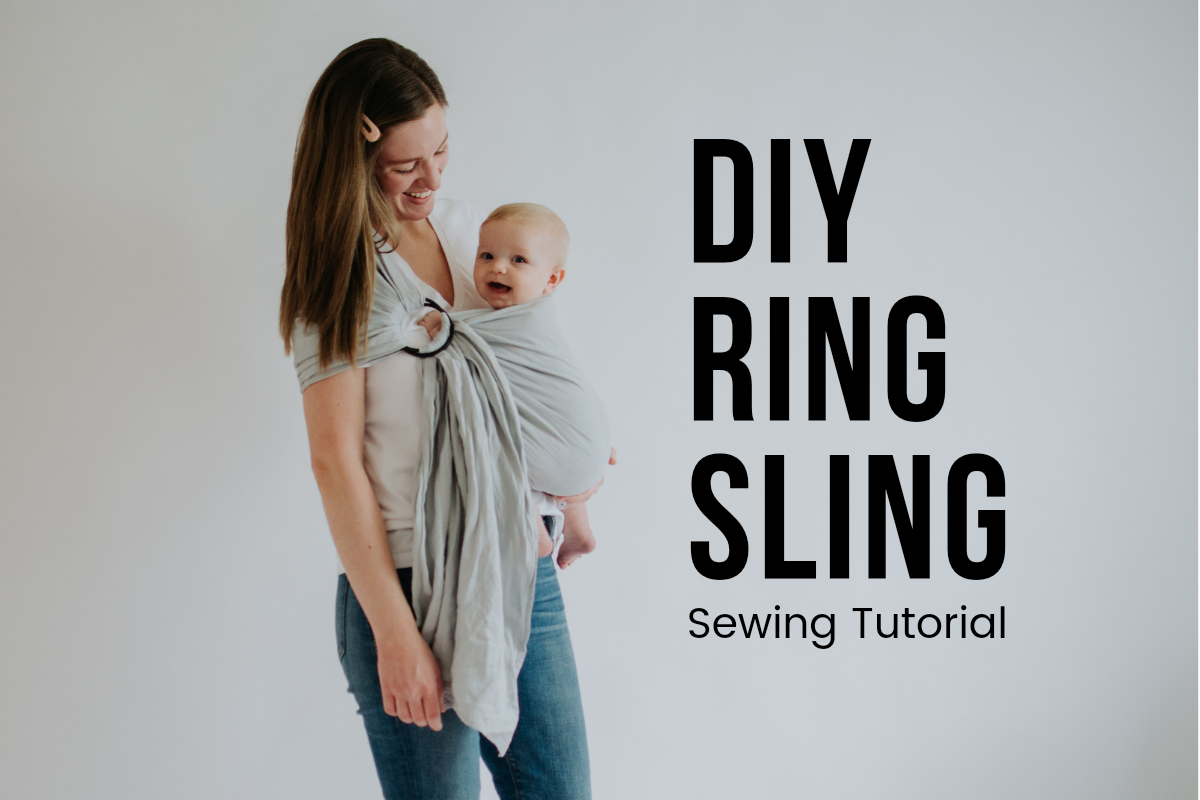
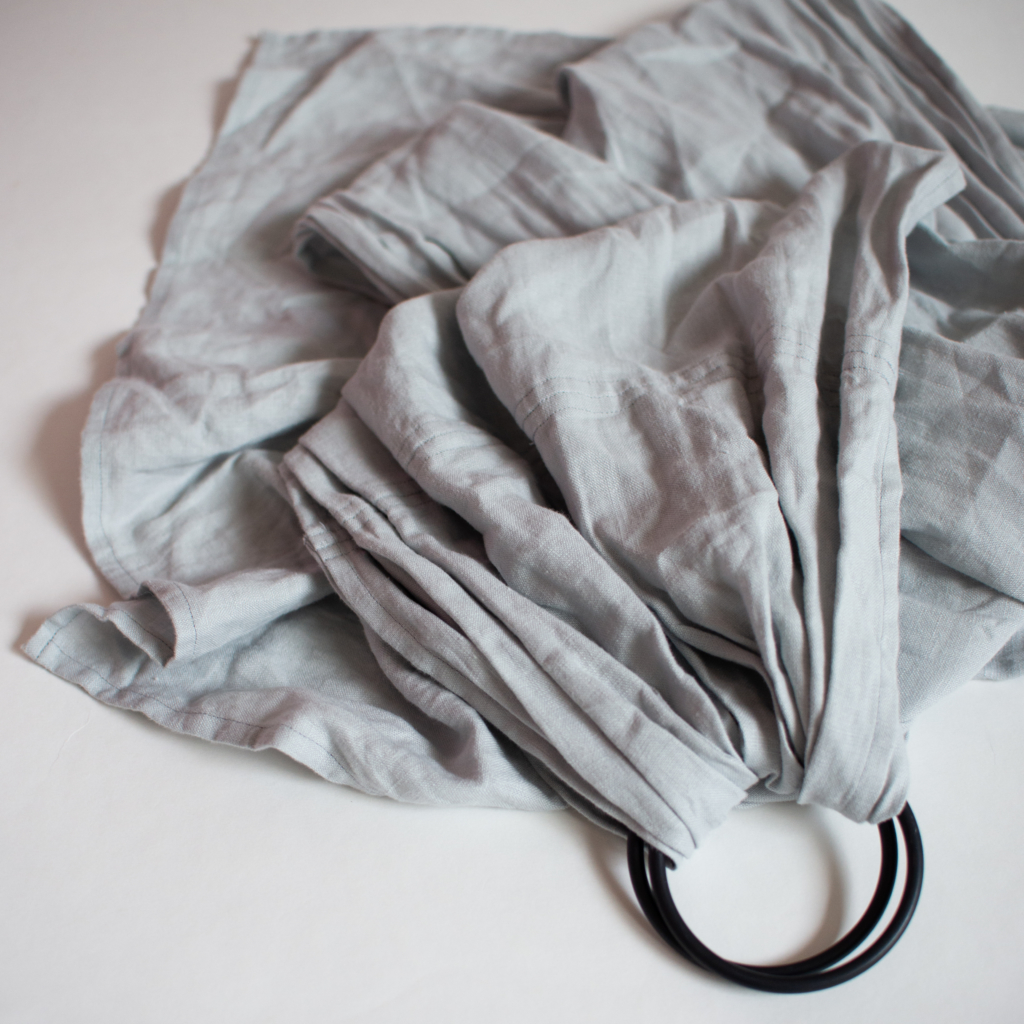

Ring slings are really popular because they are comfortable and so easy to use. I have already used mine to go grocery shopping, go for walks, tour the city, and go out to lunch. I basically use it when I go out and would rather just carry my baby, or at home when they are fussy and my arms are getting too tired to hold them. Haha.
I learned how to make these ring slings because my brother-in-law gave me a bunch of rings that he had ordered, and he wanted me to make one for his wife. After making one for her and myself, I made a few more for friends. Ring slings are so easy to make and make great gifts for expecting moms (as long as they are made with safe materials and made correctly).
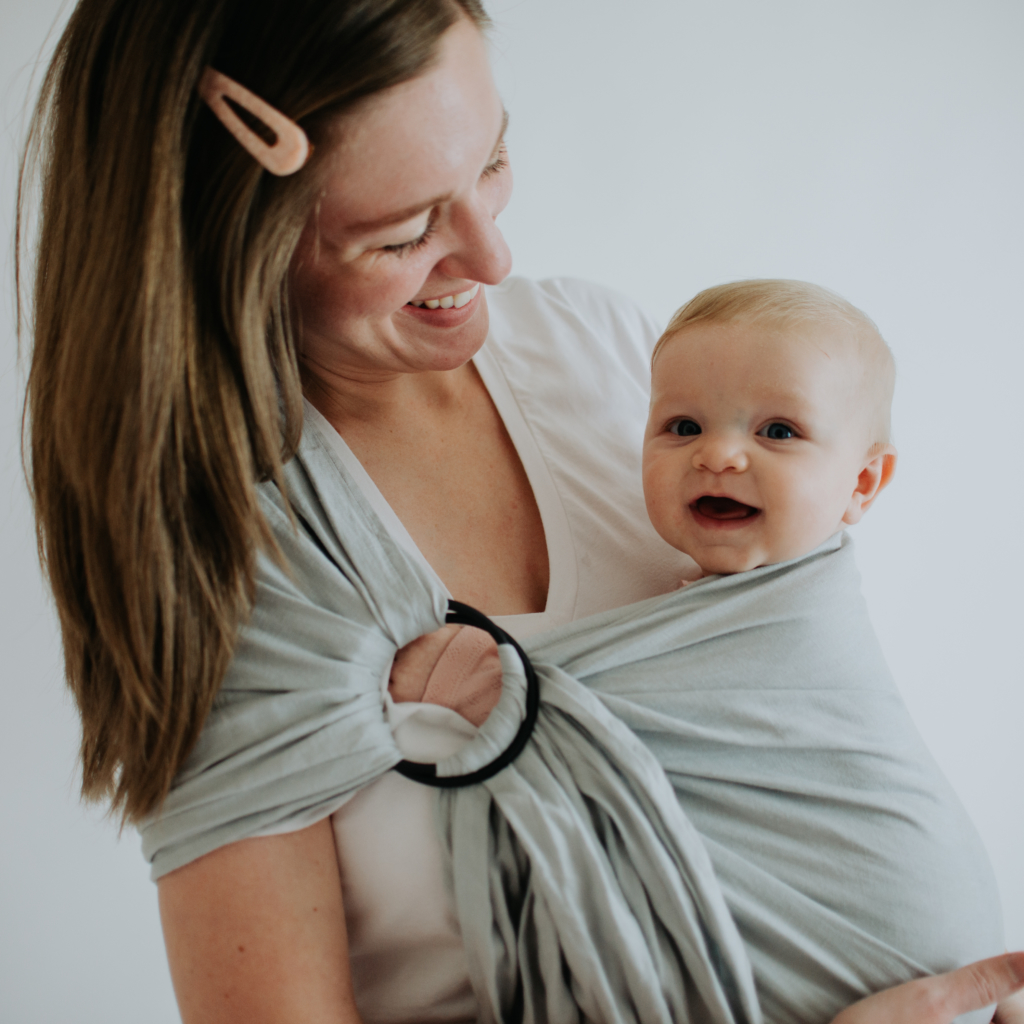



I did some research on ring slings before starting and here is what I found:
Rings:
Rings that are made specifically for ring slings are much safer when trusting them to hold your child’s weight. Accmor rings have really good reviews, and they have some great color options.
Fabric:
You want to avoid using fabrics that will get too hot, stretch too much, or lose strength when they’re wet. Good fabric choices for slings include 100% linen, cotton (like light-midweight twill or denim), or dupioni silk. You basically want a fabric that is strong, but drapes well enough to mold well to your body and your baby. High quality fabrics like linen and silk tend to be a bit more pricey by the yard, but they will better guarantee the safety of your baby. Please do not sacrifice safety for the price of the fabric. I used 100% linen for my sling and it has been great since the fabric is breathable and strong enough for when I’m pulling to tighten the sling. PLEASE CLICK AND READ THIS ARTICLE FOR MORE INFO ABOUT RING SLING FABIC.
Most ring slings are around 75-85 inches long, which is why it takes around 2.5 yards of fabric. Ring slings are around 25-30 inches wide, and when you buy woven fabric, it’s usually 50-60 inches wide. So when your making your sling you can just cut the fabric in half (long ways) and you have fabric for two slings!
Thread:
Polyester thread is best because it will last the longest. I personally use Gutermann thread.
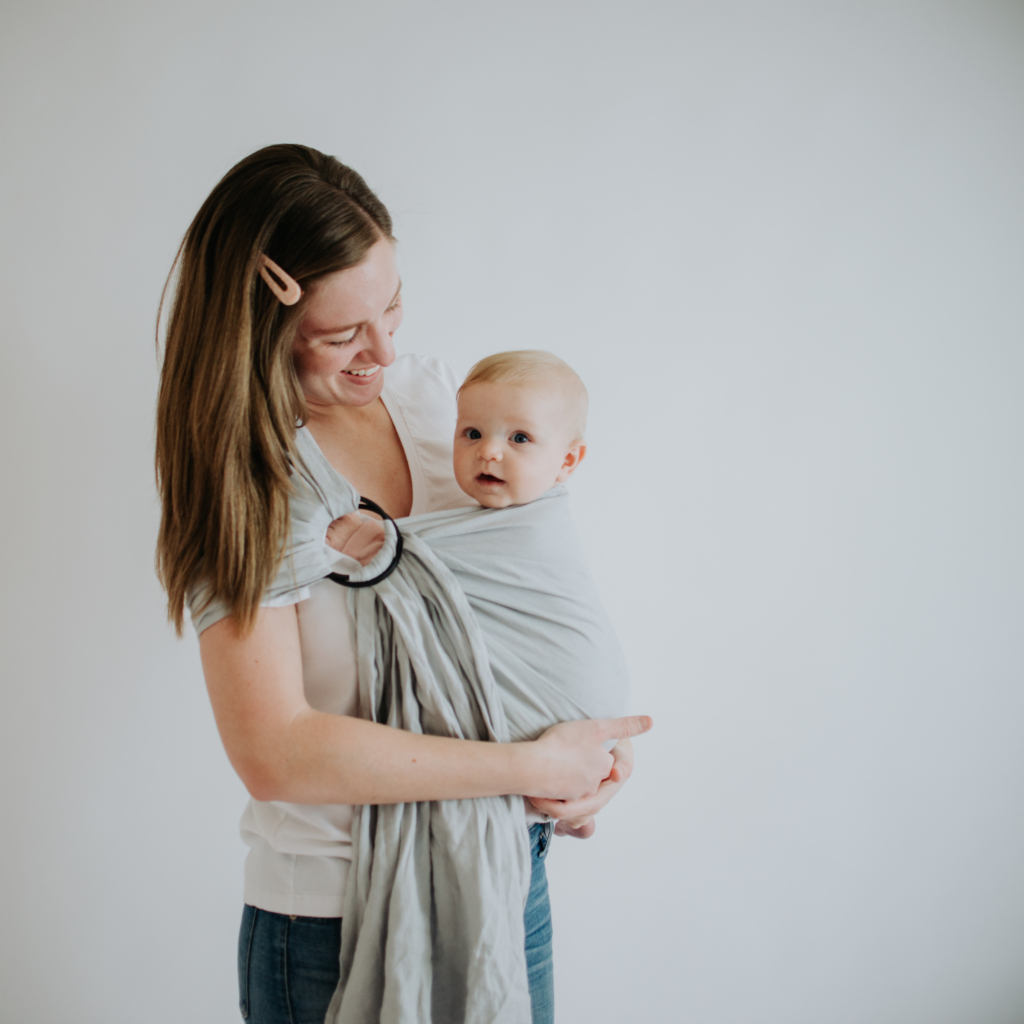
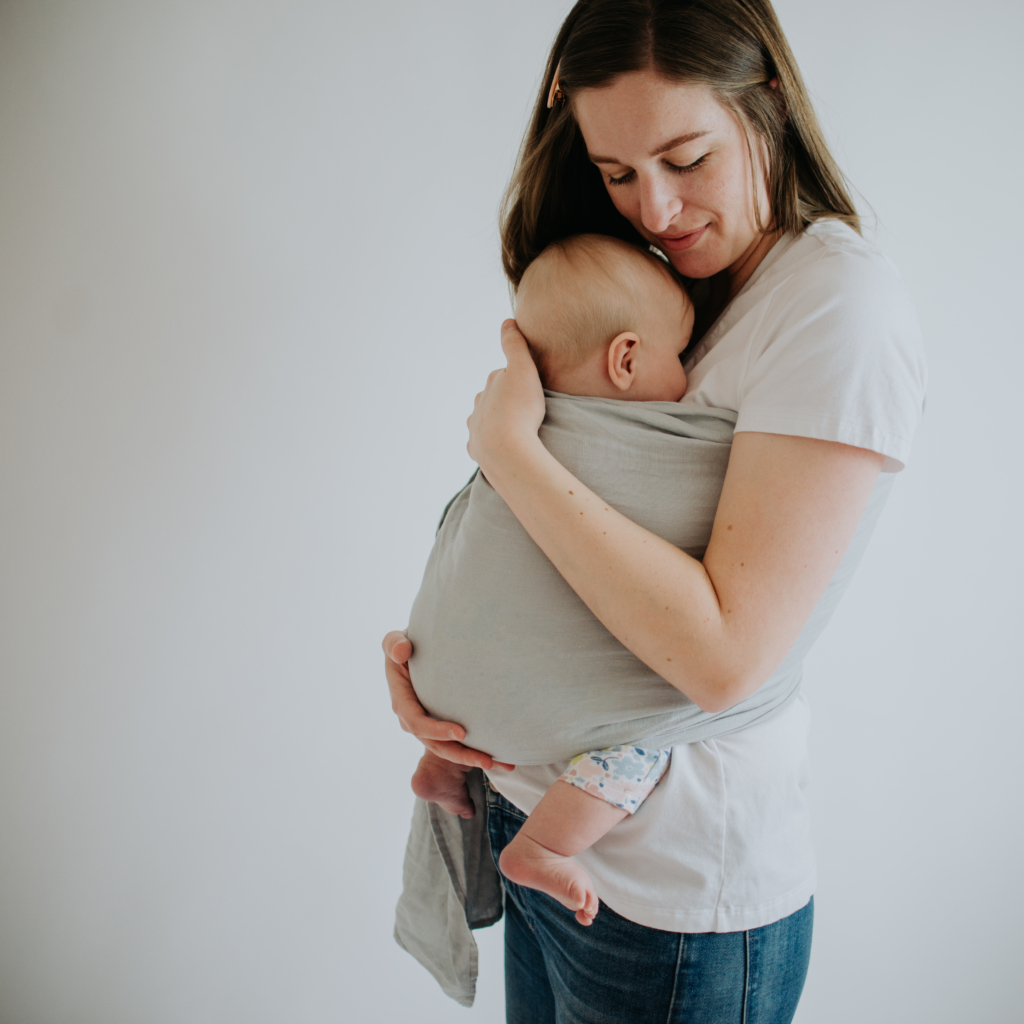
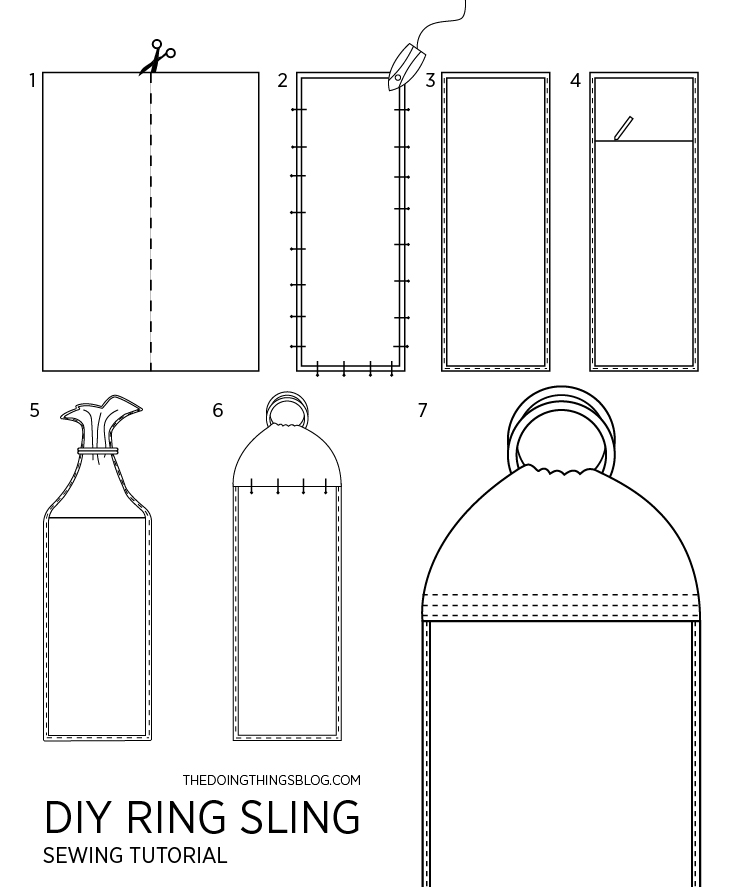
Materials:
2.5 yards of fabric (CLICK HERE for information about fabric)
2 medium or large aluminum rings (rings that are made for slings)
matching thread
pins or Wonder Tape
Fabric Scissors (to cut fabric in half)
Iron
Fabric Marker (anything that will wash out)
Directions:
Prep – Prewash and dry your fabric the way you plan on doing so in the future after your sling is made. The fabric will fray, so you can sew or serge the two raw sides together before washing, or just cut the loose threads afterwards.
1- Cut your fabric down the middle so that you have two pieces of fabric that are 2.5 yards long by about 25-30 inches wide. You will use one of the pieces of fabric to make one ring sling. **Must be one continuous piece of fabric for safety.**
2- To make a finished edge, start with one of the long sides, and fold over a quarter inch and iron. Fold the fabric over a quarter inch one more time so that the raw edge is encased in the folds. Iron and pin. Do the same for the other long side, and then the two short sides. Pin well or use Wonder Tape (wash away tape) to keep the fabric in place.
3- Right now you are only going to sew over three sides (two long and one short). Starting at a corner, sew up one of the long sides, pivot at the corner and continue over one of the short sides; pivot again and sew down the other long side, leaving the second short side unfinished. Back stitch at the beginning and end.
4- Measure 15 inches down from the end that is not sewn. Draw a straight line all the way across the fabric.
5- Get the end that is not sewn and pull it through both rings. Make sure not to twist the fabric while pulling it through.
6- Line up the unsewn edge with the line you just made. The finished edges should face each other. Pin well or use Wonder Tape to keep the fabric in place.
7- Sew over both layers of fabric, as close to the edge as possible (1/8 inch). Back stitch at the beginning and end. Sew another line 1/4 inch above that. Back stitch at the beginning and end. Sew one more line 1/4 inch above that (for a total of 3 lines). Back stitch at the beginning and end.
And you’re done! Make sure to wash out Wonder Tape before using. There are great tutorials on Youtube on how to use your sling. CLICK HERE for a great video that covers all the ring slings basics.
Happy ring sling sewing and wearing!!
Click here for the PDF printable tutorial!
This post contains affiliate links. For more information see our Affiliate Links disclosure.
Great. Thanks. The pics help also!
You’re welcome, Deborah! I’m glad it was helpful!
This is such a great tutorial. I Love your ideas very well explain.
Thank you! I’m so glad that you found it helpful!
How much was it to buy all the materials to make one of your slings? Many thanks!
Hi Marie! When I bought my fabric 5 years ago, I think the linen was around $16/yrd, but now it seems like linen is closer to around $21/yrd. The rings can be bought as a pair for $7 (I have a couple of links in the post). So, making one is probably close to around $50.
You can get high quality linen fairly cheaply here: http://fabric-store.com/
Regular prices are around $12 a yard, plus shipping. They also have great sales if you sign up for their email list and I have been really happy with the woven wrap I made out of their medium weight linen.
Watch for sales and use code ilovelinen for 7% off!
Love this! To make it a double linen sling, I assume you could sew both sides together, leaving an opening and turning it inside out to press? Then continue to add the rings as stated above?
I think you could! I’ve seen companies that sell double layer ring slings, so it should be possible. You just want to make sure there isn’t any extra stress on the seams, so maybe topstitch after turning it to the right side. So glad you liked the tutorial, Claudia!
Did you make the double sling ? Curious how well it worked
Shall u make a video please???
Hi Hanan! I don’t plan on doing a video, but that could change. I made this tutorial 5 years ago, and I don’t usually make baby things for my blog. But if you have any questions about the things I talk about in the tutorial, there are many videos online that explain them in greater detail. I hope you have good luck making your ring sling!
Thank you so much for these instructions
I had fabric so made two for my daughter so one could be in the wash
You are welcome! That’s so smart.
Would the latest in double gauze work in single layer?
Hi Lorna, Here is an excerpt from the article that I linked to about ring sling fabric. Jan talks about using gauze and says: “While cotton gauze is very nice for a wrap, it is not strong enough in a single layer for any other sewn carrier. The thinner it is, the more likely it is to tear out in a seam. If you absolutely must, you can make a sling with it in a double layer, but that may actually make it heavier than a single layer of a slightly thicker, sturdier material, and will still be prone to breaking down sooner.”
Her article is really helpful and talks about a lot of different fabrics. It’s linked in the ‘fabric’ section of my blog post. 🙂
I didn’t understand how you finished the raw edge on the unfinished once you put it through the rings.
Hi Louise. In step two you should have folded and ironed all 4 sides. So, once you pull the unsewn side through the rings, you’ll keep the fold that you ironed in the fabric and match it to the line. Then you’re going to sew over it with 3 lines of stitching, and it’s going to keep everything enclosed. Does that make sense?
Yes
Is linen similar to the material for muslin blankets? Can you use material like muslin blankets if it’s 100% cotton?
Hi Renora. I personally wouldn’t use 100% cotton muslin because it’s not quite thick enough or strong enough. Cotton tends to show more wear in places and is more likely to tear. I wouldn’t want to skimp on quality or safety for babywearing.
This information page talks about the best fabrics for babywearing and it’s super helpful: https://www.sleepingbaby.net/jan/Baby/fabric.html
Is it safe to hand stitch this instead of using a machine?
I wouldn’t trust my hand stitching. I think the machine does a better job of making sure the stitches have the right tension and are secured well. If it’s for a kids toy to hold baby dolls, that would be totally fine, but not for a baby. Good question!
Could I use 2 layers of cotton, one being flannel, to make a double layer sling? The other cotton is a tighter knit than a quilting cotton.
Thank you
The important thing is that the fabric is strong and doesn’t tear easily. The article I linked to has very helpful information on what types of cotton work best for slings. If you plan to double layer it, that will make it stronger, but also thicker, so just keep that in mind.
Here is the link to the article: https://www.sleepingbaby.net/jan/Baby/fabric.html — I think the first section “What kind of general-purpose fabric should I use?” and 4th section “I want to use a pretty cotton…” both have good information for you. I hope that helps!
I was gonna use old jeans until I saw it has to be one continuous piece of fabric
My Jean leg is only 27”
But it was a great tutorial thanks
Yes, you definitely want it to be a continuous piece for safety and security. I’m glad you liked the tutorial!